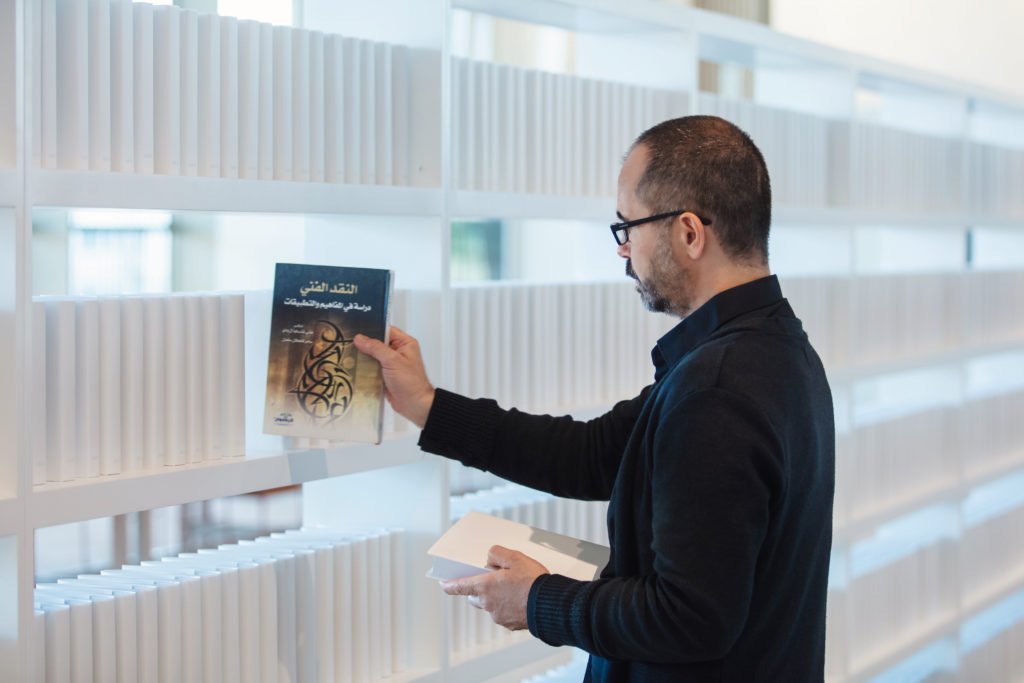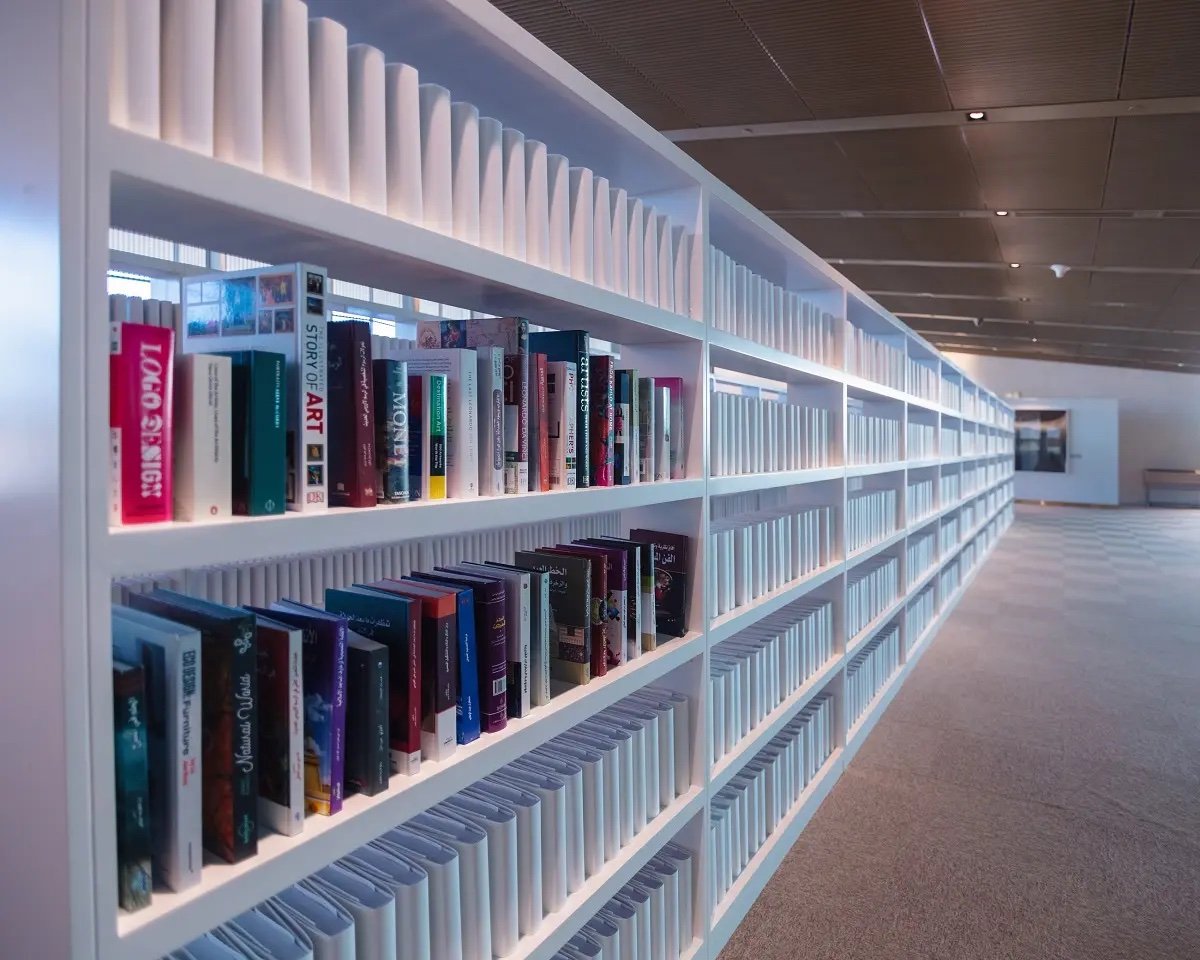
House of Wisdom
Sharjah, U.A.E.
Design services for the opening of the House of Wisdom, Sharjah, U.A.E. featuring the premier of Wafaa Bilal’s “168:01”
During the invasion of Iraq in 2003, the College of Fine Arts at the University of Baghdad lost their entire library from looters who set fire to the collection. More than 70,000 books were reduced to ashes. Over thirteen years later, students at the college still have few books from which to study.
In 168:01, Bilal has constructed an austere library containing 1,000 empty white books. The white library serves as both a monument to the staggering cultural losses endured throughout Iraq’s history as well as a platform for its rebirth. Aimed at restoring the college’s lost archives, 168:01 positions viewers as potential participants whose contributions fund educational texts from a wish list compiled by students and faculty. As the installation accrues donations, the blank books are replaced with new ones and the library’s shelves become saturated with knowledge and vibrancy. Select donors receive these books in return for their contribution and as a symbol of the void they have helped to rectify. At the end of the exhibition, all donated texts will be shipped to Baghdad. In this way, the white library activates a system of exchange connecting its visitors in Canada and beyond to the College of Fine Arts in Iraq.
Iraq has a long history of cultural destruction. During the Islamic Golden Age in the 13th century, an invading Mongol army set fire to all the libraries of Baghdad, including the famed House of Wisdom, or Bayt al-Hikma. Legend describes the invaders throwing the Bayt al-Hikma’s library into the Tigris River, creating a bridge of books for their army to cross. The pages bled ink into the river for seven days, at the end of which the books were drained of knowledge. For Bilal, 168:01 refers to the first moment when grief is transformed into a call to action, signalling the struggle to move forward from the ashes of ruin.
Wafaa Bilal, Artist & Professor, Tisch School of the Arts, New York University
"I turn to Ian when I need a thought partner – one that can quickly understand the context and dynamics of unique situations. His generosity is unparalleled, and his creative counsel, cultural sensitivity and strategic insight have helped me produce stunningly elegant projects again and again. He never fails to transform complex problems into opportunities for growth."





